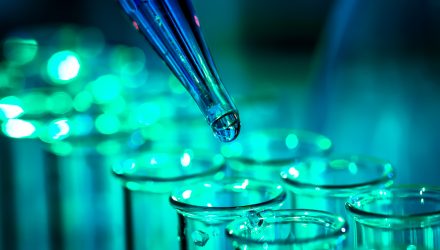First was the industrial revolution, then came the information era with the Internet; next up are genetics and biotechnology. New megatrends help steer the way the global economy develops. Should they steer your portfolio accordingly?
In the upcoming webcast, The Era of Biotech: How Biology Became Technology, Jeremy Schwartz, Executive Vice President, Global Head of Research, WisdomTree Asset Management; and Jamie Metzl, member of the World Health Organization expert committee on human genome editing, will look at the innovation that is fueling healthcare industry and beyond.
To help investors access innovation in the healthcare industry, WisdomTree recently launched the WisdomTree BioRevolution Fund (WDNA) on the CBOE. WDNA seeks to track the price and yield performance, before fees and expenses, of the WisdomTree BioRevolution Index (WTDNA) and has an expense ratio of 0.45%.
WisdomTree leveraged data from Dr. Jamie Metzl, one of the world’s leading technology futurists and special strategist for WisdomTree, in its construction of the WisdomTree BioRevolution Index, which identifies the key sectors and industries that are expected to be most significantly transformed by advances in biological science and technology.
The WisdomTree BioRevolution Fund merges both qualitative and quantitative evaluations of eligible stocks to identify a portfolio of best-in-class companies working at the forefront of these biological breakthroughs through the following themes:
- Human Health: The application of genetic technologies to prevent and treat diseases will significantly enhance human health, well-being, and longevity, with vaccine development being a top example.
- Agriculture & Food: The genetics and biotechnology revolutions will increasingly transform agriculture, aquaculture, and food production, creating healthier and more sustainable models for feeding the growing population.
- Materials, Chemicals, and Energy: Biological reengineering will produce an increasing percentage of the physical inputs needed for manufacturing.
- Biological Machines & Interfaces: DNA has approximately one million times greater storage capacity than hard-disk storage.
Financial advisors who are interested in learning more about the biotechnology sector can register for the Monday, June 21 webcast here.








